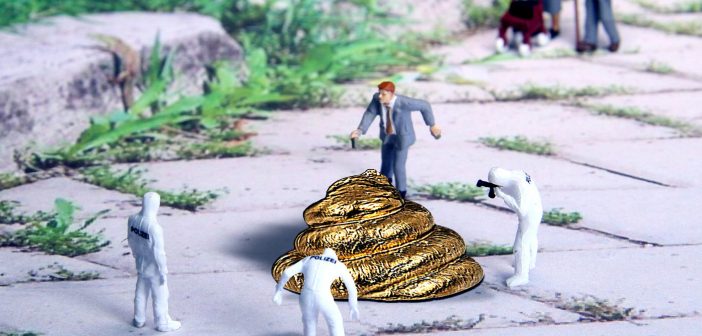We take care of them and they take care of us day-in and day-out; dogs are some of the best companions around! With this compassion comes great responsibility for us dog owners, though. Every day we need to make sure we as pet owners are giving our furry friends the attention they need.
Really, a dog’s health is very much in your hands! To make sure they’re doing well, there’s one (unfortunate) way to get a very good picture of what’s happening on the inside of your pup: their poop.
Dog poop is a superb indicator of your dog’s health. Because it’s one of the only substances that come out of their body that’s large enough to examine, vets look at it for an indicator into their health.
Luckily, this process is simple. Using the same metrics veterinarians use, owners have the ability to notice when something just isn’t right with their dog. These indicators, when it comes to dog poop, are called “The 4 C’s.”
We jump into what the 4 C’s are down below, but before that you’ll need to know how to collect a sample of dog poop to bring in to your vet.
Vets will ask you to bring a fresh sample of your dog’s stool to examine.
Here’s how to collect that:
- Wear protective, disposable gloves.
- Take pictures of poop as it is on the ground.
- Put the poop into a plastic bag meant to carry dog poop.
- If the poop is watery, gather as much as possible and ensure photos have been taken.
- Tie the bag off.
- Put the bag into an airtight shallow container (Tupperware works).
- Refrigerate if not heading directly to the vet.
Now, as mentioned, you are still able to examine the stool for yourself at home to know if a call to the vet is needed. This is where the “4 C’s come in.” They include:
- Color
- Consistency
- Content
- Coating
First, different colors can indicate different ailments. black-streaked stool can mean your dog is having digestive issues. Green stool can mean your dog is eating too much grass and requires supervision outside.
Next, consistency is a major indicator of diet. Less-firm stool can mean your dog is sick, while hard stool means they need water.
Third, your puppy’s poop content is an obvious way to tell what their health is doing. If you find some fur or traces of food in your dog’s stool things are likely normal. Something more than this requires a visit to the vet.
Lastly, a dog’s poop coating is the fourth “C” you should review. Any sort of sticky film means your dog isn’t digesting properly. The easiest way to tell if there is some sort of coating on a stool is to look at the grass after you pick it up. Excessive reminisce indicates a coating is present.
If any of these “C’s” cause alarm, call your vet. For a more detailed look at how dog poop can be a key indicator of your dog’s health, review this information by Gallant to become a more responsible dog owner.





